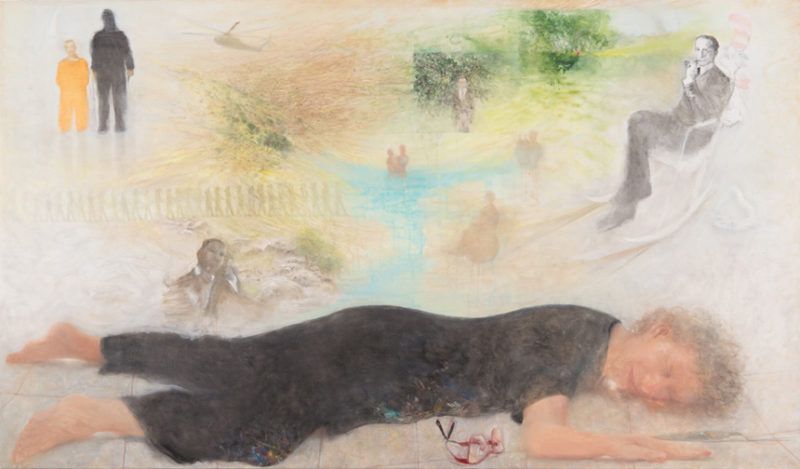Studio Dreams Exhibition Text
Text for the solo exhibition Studio Dreams that took place at the Maalot Center for the Arts in 2018. Curator: Noga Migdal
Ruth Kestenbaum Ben-Dov – Studio Dreams
In her exhibition Studio Dreams, Ruth Kestenbaum Ben-Dov observes herself and those close to her, while at the same time submerging herself in a liminal sphere in which she conducts an ongoing discourse in the space that lies between the physical and the emotional, and between the material and the spiritual and religious. Haim Maor (who exhibits alongside her) wrote in 1999: “Ruth Kestenbaum Ben-Dov tries to settle the contradictions between Jewish culture and art. The former is sometimes perceived as a realm of words and spirituality, while the latter is thought of as a world of pictures and materiality; Traditional Judaism is considered a sphere of legal limitation, and art a sphere of endless freedom. The artist’s works confront the contradictions in her life as an observant woman, and as a female artist working within the Israeli art scene.” It appears that in her recent works Jewish sources and female identity are part of a variety of elements that populate her consciousness, and they continue to confront her with conflicts, dilemmas and challenges.
A painful theme that simmers beneath and above the surface is parting, something that we may occasionally initiate, but which is generally beyond our control. While close emotional relationships constitute a primary source of feelings of joy and satisfaction for most of us, parting is perceived to be one of the more significant causes of distress in life. Nevertheless, separation is an important and necessary stage in human and interpersonal relationships, and marks the ending of various periods in the life cycle: it is experienced by a mother sending her children away to the army, and by a daughter with an aging father nearing the end of his life. In her new works Ben-Dov suggests that alongside feelings of grief, there is an opportunity to create out of this parting experience.
The painting Studio Dreams contains chaotic, restless images that emerge from childhood memories, landscapes, art history, current events, and more. The image of the artist lies at the bottom of the painting, inundated by a series of thoughts and associations that reveal her inner conceptual world. Ben-Dov confronts us with a great many stories that do not constitute a single harmonious plot, but are rather an assemblage of interrupted, illogical and even violent dreams.
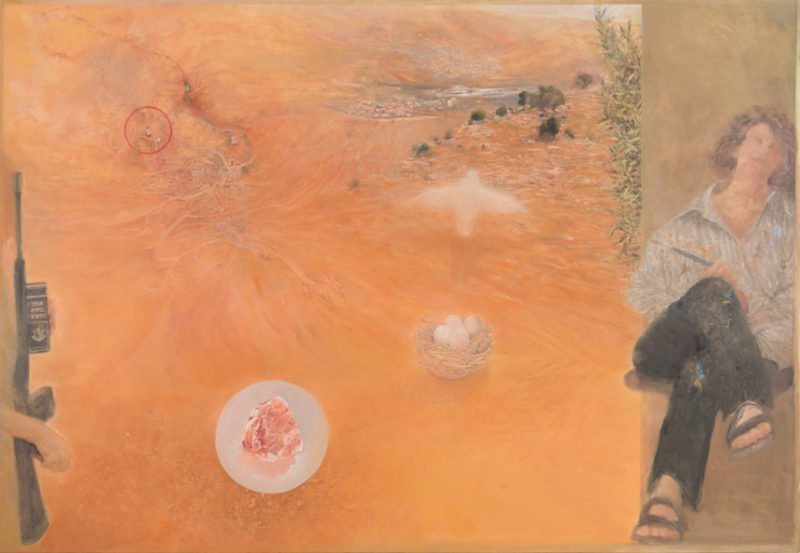
Ki Tetzeh (When you go out to war), 2015, oil on canvas, 100 X 145 cm (39 X 57”)
Inspired by the passage in the Book of Deuteronomy that begins with “When you go out to war against your enemies,” the artist creates a painting that, like Studio Dreams, includes a number of images scattered across the canvas. The figure of the artist may be seen sitting at the edge of the composition, pondering scenes that allude to a mother who views herself as a bird leaving her eggs or chicks in the nest before seeing them taken from her; a mother who is not afraid to share her misgivings about the duty to send her children to the army and separate from them.
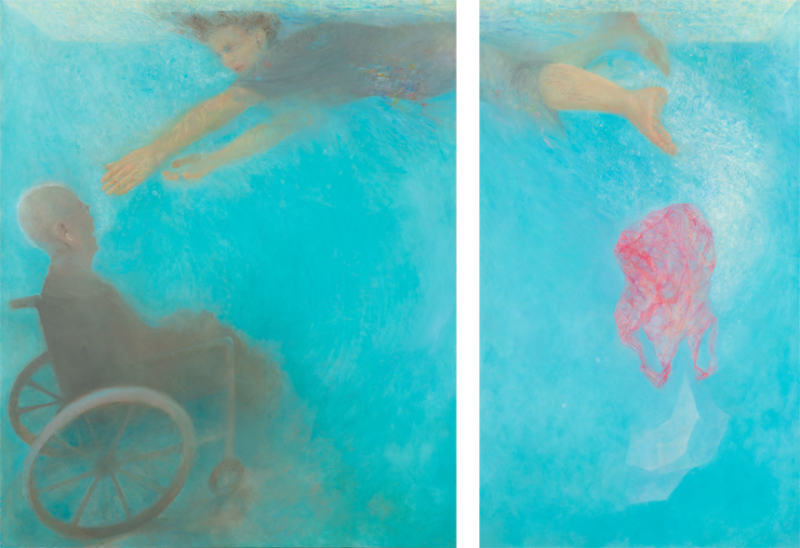
Lost and Found, 2015, oil on canvas, 120 X 180 cm (47″ X 71”)
The work Lost and Found is structured as a diptych, which may be read as a metaphor for Ben-Dov’s relationship with her father, who withdrew into himself as a result of his illness. She imagines herself swimming in her studio work clothes, trying to touch her father in his distant underwater world. “I try to reach him while keeping my head above water,” she says. While working on this painting Ruth added a section that refers to the unexplained loss of a bag of letters from her mother. She notes that “the loss of the tangible memories in the letters seemed to parallel my father’s loss of his own memory.” The hands of the figure barely touching, opposite her legs kicking in the water manifest “our dual movement towards and away from our parents, closeness and separation, both during their lives with us and after their deaths,” in the artist’s words. The same lost plastic bag features in further works, most recently in which it appears to dance in water opposite a paint-stained work shirt. Loss and creation are intertwined, as the shirt bloated with water alludes to a pregnant belly, giving birth to the paint material itself.
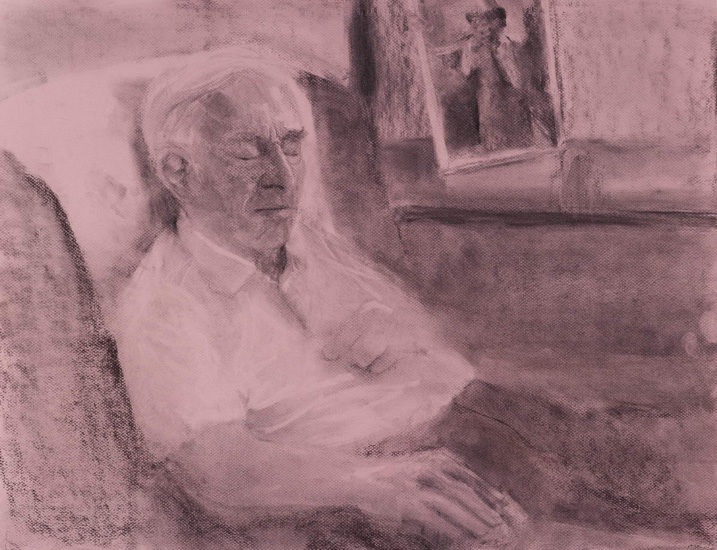
Drawings of my father, 2013-14, charcoal on canvas
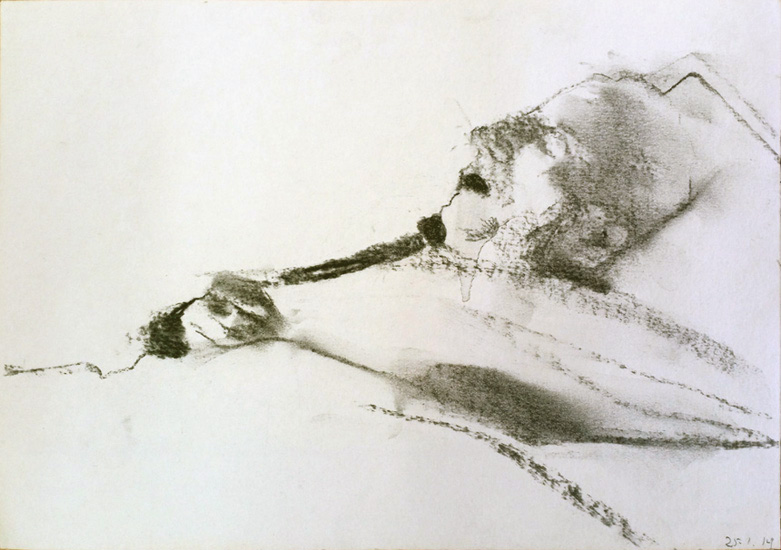
A number of drawings of her father awake or asleep produced between 2011 and 2014 record the process of his decline. Ben-Dov explains: “During that period I became acquainted with the term “ambiguous loss” coined by the scholar and therapist Pauline Boss; a condition in which a person is physically present, but psychologically absent. In such a situation a kind of bereavement begins while the beloved person is still alive. These works address this, but also remind me that my father was never completely absent: every visit included real contact, not only through the act of drawing him.”
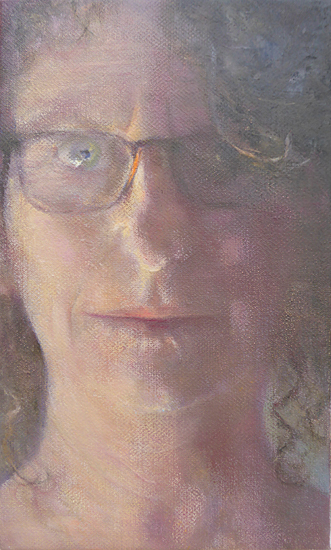
Self Portrait for a New Year, 2017, oil on canvas, 27 X 16 cm
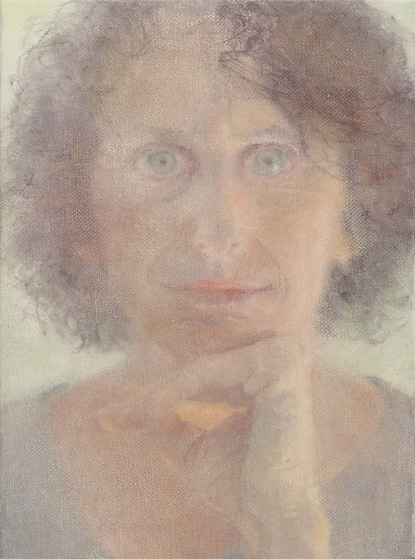
Self-Portrait for a New Year, 2011, oil on canvas, 27 x 20 cm
In the series entitled Self Portrait for a New Year produced between 2009 and 2017, the artist examines and investigates her identity through observation of her own face. The self-portraits were created annually, close to Rosh Hashanah, in a sort of “visual self-examination.” The series traces the inevitable processes of physical change that the artist undergoes over these years, thus corresponding with other works in the exhibition that engage with change, separation and growth, or, as the painting’s title suggests, with both “lost and found.”
Alongside feelings of sorrow and disintegration, we find in Ruth Kestenbaum Ben-Dov’s new works a yearning for and pursuit of beauty, belonging and meaning.
Noga Migdal
